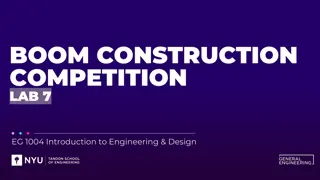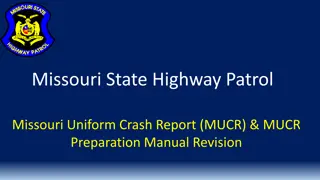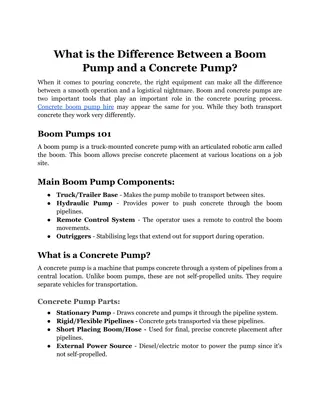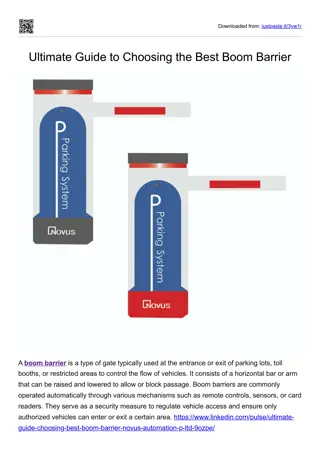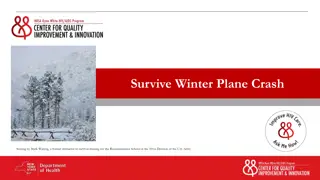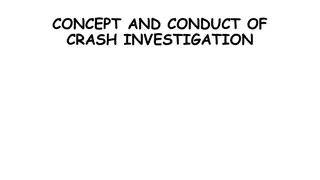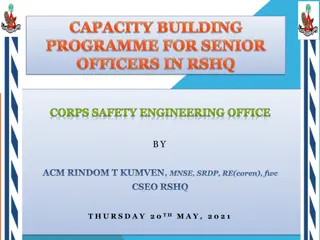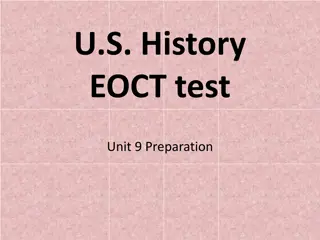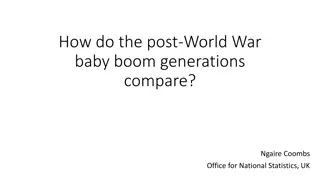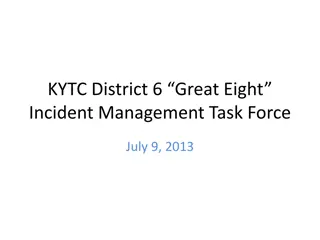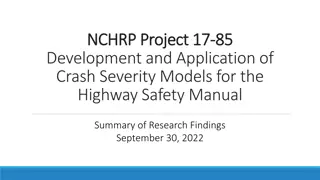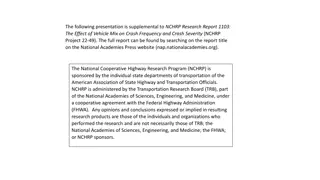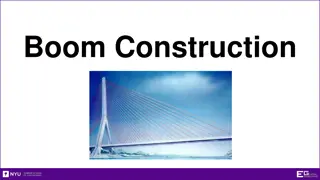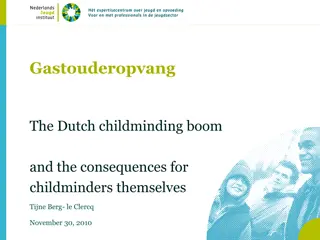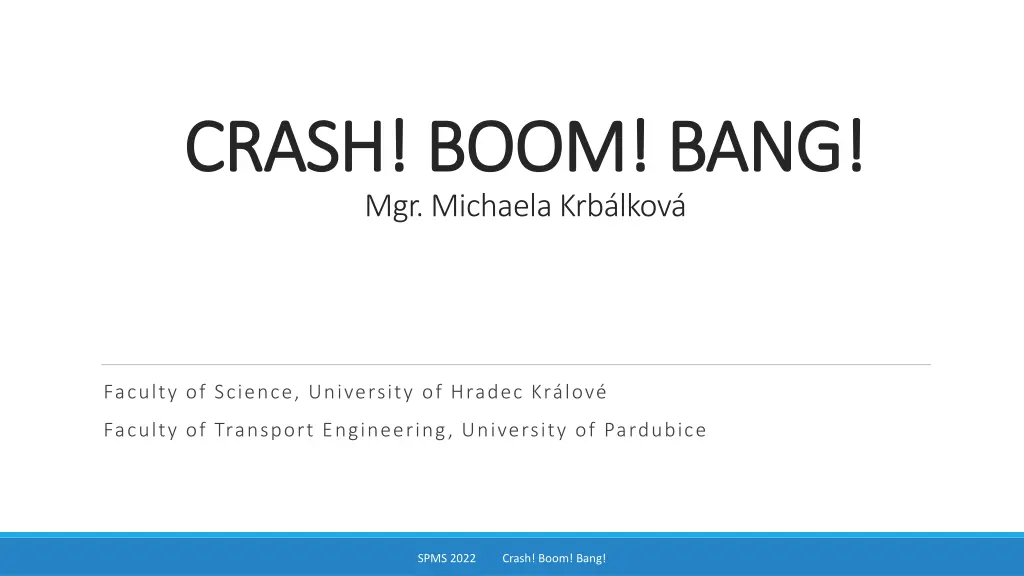
Vehicular Dynamics Study near Unsignalized Intersection
Investigate vehicular dynamics at a T-type unsignalized intersection, analyzing the behavior of main stream vehicles and the implementation of Gap Acceptance theory for optimal urban intersection design.
Download Presentation

Please find below an Image/Link to download the presentation.
The content on the website is provided AS IS for your information and personal use only. It may not be sold, licensed, or shared on other websites without obtaining consent from the author. If you encounter any issues during the download, it is possible that the publisher has removed the file from their server.
You are allowed to download the files provided on this website for personal or commercial use, subject to the condition that they are used lawfully. All files are the property of their respective owners.
The content on the website is provided AS IS for your information and personal use only. It may not be sold, licensed, or shared on other websites without obtaining consent from the author.
E N D
Presentation Transcript
CRASH CRASH! BOOM! ! BOOM! BANG Mgr. Michaela Krb lkov BANG! ! Faculty of Science, University of Hradec Kr lov Faculty of Transport Engineering, University of Pardubice SPMS 2022 Crash! Boom! Bang!
Investigated problem vehicular dynamics in the vicinity of an unsignalized intersection of the T-type SPMS 2022 CRASH! BOOM! BANG!
main stream vehicles not affected by events on the minor road moving independent of vehicles in opposite direction dynamic properties description well-developed (physics of vehicular traffic) minor stream commanded direction of turn implicit real-time decision-making procedure based on critical gap acceptance or rejection of a given time gap SPMS 2022 CRASH! BOOM! BANG!
=> Gap Acceptance theory (GA) standardly-applied engineering method capacity models for optimal designing of urban intersections and roundabouts SPMS 2022 CRASH! BOOM! BANG!
Our goal reformulation into a purely mathematical form operating strictly in the language of random variables in-depth revision of commonly accepted starting points = essentials for capacity problem! SPMS 2022 CRASH! BOOM! BANG!
Fundamental terms time headway = time interval between two events: 1) front bumper of the preceding vehicle intersects a detector line 2) front bumper of the reference vehicle intersects a detector line time clearance = time interval between two events: 1) back bumper of the preceding vehicle intersects a detector line 2) front bumper of the reference vehicle intersects a detector line traffic intensity = the number of vehicles passing a fixed point located on the main street within a time interval main/minor traffic stream: right-of-way / no right-of-way SPMS 2022 CRASH! BOOM! BANG!
The standardly-applied engineering methods inputs main-stream time-clearance distribution: ?(?) main-stream traffic intensity: ? number of minor-stream vehicles accepting the main-stream clearance of size ?: ?;?(?) assumptions saturated traffic flow for the minor-stream ?(?) exponentially distributed critical gap = single value SPMS 2022 CRASH! BOOM! BANG!
based predominantly on study by Werner Siegloch (1973) Siegloch s function expectation of ?? ? ? = ?=0 ?P ??= ? capacity of the unsignalized intersection ? = ? ? ? ? ? ?? 0 SPMS 2022 CRASH! BOOM! BANG!
data collection: high-definition video recording processing: computer vision methods (particular vehicles and their parameters) form of data records individual main-stream clearances number of vehicles that have accepted the gap (acceptance order ?) individual velocity current traffic intensity SPMS 2022 CRASH! BOOM! BANG!
accepted clearance of order ? main-stream clearance accepted by ?vehicles including variant ? = 0 set ? of all clearances = disjoint subsets ?? of clearances of acceptance order ? sample-acceptance ratios ?? proportional decomposition of main-stream clearances corresponding to acceptance order ? ?? ? ??= SPMS 2022 CRASH! BOOM! BANG!
Standardly-used approach for the approximation of the Siegloch s function empirical data: (individual main-stream clearance x; acceptance order k) averages of clearances ? accepted by exactly ?minor-stream vehicles dependence between acceptance order ? and average clearances ? linear regression for calculated average clearances critical gap SPMS 2022 CRASH! BOOM! BANG!
Discrepancies ASSUMPTIONS: REALITY: saturated traffic flow for the minor-stream saturated traffic flow for the minor-stream ? is exponentially distributed, i.e. g x = ? ?e? NO! GIG distribution NO! saturated traffic flow exponential distribution minor-stream headways exponentially distributed NO! it differs from driver to driver, from time to time, etc. critical gap = single value SPMS 2022 CRASH! BOOM! BANG!
Reformulation to random variables vast majority of contemporal approaches are average-based the same numerical characteristic (i.e. critical gap) various distributions different Siegloch s function (dramatically) different capacity CRASH! new assumption: critical gap varies in each individual implementation SPMS 2022 CRASH! BOOM! BANG!
main-stream time clearance random variable ? stochastic nature critical gap random variable ?! minimum time clearance between two succeeding vehicles in the priority stream that a minor-street driver is willing to accept for entering the main-stream SPMS 2022 CRASH! BOOM! BANG!
New probabilistic model statistical distributions of main-stream time-clearances ?(?) and critical gaps (?) ?(?), (?) exponential probability density probability densities ?(?), (?) = comprehensive knowledge about intersection capacity BOOM! SPMS 2022 CRASH! BOOM! BANG!
Gap Acceptance procedure simple decision routine critical gap ? ~ (?) compared to an offered main-stream clearance ? ~ ?(?): 2nd order critical gap ?(2)= ?1+ ?2, ?1,?2~ (?) i.i.d. ? ? ? < ? ? = 0 ? ?(2) ? < ?(2) ? = 1 3rd order critical gap ?(3)= ?1+ ?2+ ?3, ?1,?2,?3~ (?) i.i.d. ? < ?(3) ? = 2 ? ?(3) 4th order critical gap ?(4)etc. ? ? < ?(?) ? = ? 1 where ?(?)= ?=1 ??. repeat with new clearance X SPMS 2022 CRASH! BOOM! BANG!
Distributions of gaps acceptedby ? vehicles main-stream time clearances: random variable ? ~ ?(?) with realization ? individual critical gap of the driver ?th minor-stream vehicle: random variable ?? ~ (?) with realization ?? modeled proces of inclusion: generate ?,?1,?2, and apply decision rule ?1 < ? 1st driver enters the main stream; remaining time ? ?1 ?2< ? ?1 2nd driver accept the same gap; remaining time ? ?1 ?2 etc. until the remaining time clearance is not accepted by the actual driver SPMS 2022 CRASH! BOOM! BANG!
? ~ ?(?) independent of ?1,??+1and ?1,??+1i.i.d. with density function (?) event time clearance is accepted by exactly ? vehicles : ?1+ ?2+ +??< ? < ?1+ ?2+ ??+ ??+1 Z = ?1+ ?2+ ?? Z < ? < ? + ??+1 ? ?1, ??i.i.d. density function ?(?) of random variable ?: ?? = ?=1 (?) outputs: 1) theoretical distributions of time clearances accepted by ? vehicles ??(?) 2) ? = theoretical counterparts of the sample acceptance-ratios ?? SPMS 2022 CRASH! BOOM! BANG!
Goals vs. results Our goal: decomposition of set of main-stream to several subsets distribution of clearances accepted by exactly ? minor-stream vehicles Results: decomposition tool = implicit acceptance-rule described mathematically by probability density (?) (?) describes how individual critical gaps are distributed ? ~ (?) decides on acceptance/rejection of an offered priority-stream gap SPMS 2022 CRASH! BOOM! BANG!
Classic problem vs. real problem math-textbooks formulation of the problem distribution g(x) and h(y) are known What is the decomposition of main-stream clearances into subsets corresponding to acceptance order k? What are distributions of these subsets? real-life formulation of the problem We can know ?(?), estimated from empirical data. We have sample-acceptance ratios corresponding to acceptance order ?. We can estimate distributions of clearances accepted by ? vehicles. We don t know the acceptance rule ? SPMS 2022 CRASH! BOOM! BANG!
Conclusion We can find (?) by consistent reformulation of this problem into language of stochastic variables numerically so far but we hope also for deriving by theoretical (mathematical) approaches TO GO OVER WITH A BANG! SPMS 2022 CRASH! BOOM! BANG!

